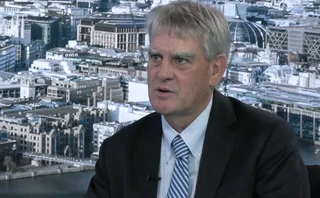
Private bank of the year: Citi
Asia Risk Awards 2018

Citi Private Bank serves the upper-end of the high-net-worth market, working exclusively with clients whose net worth is more than $10 million. As a group, the finance giant divides its wealth business into segments with its Consumer Banking business, through Citigold Private Client – serving clients with a net worth of between $1 and $10 million – and Citigold, which serves clients with a net worth of $100,000 to $1 million.
The firm saw broad-based growth across all products and markets in 2017, although the stand-out was from an inflow into investments, which increased more than 50%, while geographically China led the way for growth.
“In Citi, we have a wealth continuum,” says Donna Leong, managing director and head of marketing and sales for Asia-Pacific. “We each have our separate service models and leverage on each other’s platforms or resources where it makes sense to collaborate. This segmentation allows us to establish a service model and platform suited for that particular client segment. A number of firms do it all under one umbrella. That actually drives costs up because you have a mismatch of service model with your respective client base.”
While the year 2017 to 2018 proved positive for many private banks, Citi recorded it as one of its best years. In 2018, it has seen similar momentum, albeit tempered by volatility and discussions of a trade war, which have raised concerns.
“That has led us to increased client engagement; discussing portfolio strategies in accordance with the client’s risk appetite and also taking advantage of opportunities when they are presented,” says Leong.
Finding the right opportunities for clients is made easier by the firm’s global reach and its segmented business lines. Its Global Client Service (GCS) has enabled customers to diversify investment across the Asia-Pacific region, Europe and the US, supporting clients as they and their families establish their business and private lives in multiple jurisdictions. That not only offers greater access to investment products, but minimises client friction as they move between different regulatory frameworks.
“Our clients are becoming increasingly global in their business, their personal lives and investment interest,” Leong observes. “Being able to facilitate financial assistance to them beyond their borders has become an essential part of our business model. Over 40% of Citi Private Bank’s bankers participate in the GCS program and we continue to drive up participation.”
Just as it seeks to overcome geographical boundaries, Citi Private Bank is working to cross generational boundaries by running programmes that will prepare the HNW clients of the future and assess how best to interact with them. These are groups of people who may be looking at banking and investing differently.
“Mothers and fathers want confidence in handing over the reins,” says Leong. “We have revamped our programmes to help us meet the needs of a wider cross-section of the next generation of our clients, with the foundation level focusing on the basics of wealth management. We also run a programme based in Silicon Valley that focuses on helping successors understand and embrace the impact and challenges of disruptive innovations. Our most recent programme, Empowering Leadership, which takes place at Cambridge University, explores the many facets and ‘hats’ of leadership.”
In Citi, we have a wealth continuum. We each have our separate service models and leverage on each other’s platforms or resources where it makes sense to collaborate. This segmentation allows us to establish a service model and platform suited for that particular client segment
Donna Leong, Citi
The bank is looking at other support it can provide to clients regarding existing assets and investment decision-making, and how to best deliver that. Its Global Investment Lab is focused on this effort. It comprises a worldwide team including a dedicated unit in Asia, which work together to serve global clients. In 2017, the Lab saw a 100% increase, year-on-year, in the number of clients it served.
To better share Citi Private Bank’s key investment themes and market outlooks, while tailoring the offering to each client, the Lab introduced an ‘Outlook Watchlist’ for clients, each of which is prepared by taking into account the wider contents of clients’ individual portfolios and then showing clients what their portfolio exposures are across various segments against the bank’s outlooks and views. Feedback has led to a Mandarin version being developed.
The Lab was also able to prepare reports for clients challenged by the rallying markets in 2017, which created uncertainty in terms of how to move forward, along with its Investing in Asia publication, designed to support clients in the region looking to diversify into other opportunities within Asia, as well as global clients in other parts of the world looking into Asia for potential opportunities.
The firm still feels competitive pressure and will be fighting to thrive in the year ahead, with volatility predictions creating opportunities as well as threats for its clients. However, key to the bank’s strategy will be supporting the next generation, who will be needed to develop and innovate new products and services for the bank. Building that is a challenge in itself.
“Vying for talent is a competitive pressure, and not overpaying for it is equally important,” says Leong. “In markets like China, which is less mature compared with other more established markets such as Hong Kong, there is more of a limited pool. That is why we take training and promoting internally seriously, and as a result we can benefit from a rich source of talent.”
Only users who have a paid subscription or are part of a corporate subscription are able to print or copy content.
To access these options, along with all other subscription benefits, please contact info@risk.net or view our subscription options here: http://subscriptions.risk.net/subscribe
You are currently unable to print this content. Please contact info@risk.net to find out more.
You are currently unable to copy this content. Please contact info@risk.net to find out more.
Copyright Infopro Digital Limited. All rights reserved.
As outlined in our terms and conditions, https://www.infopro-digital.com/terms-and-conditions/subscriptions/ (point 2.4), printing is limited to a single copy.
If you would like to purchase additional rights please email info@risk.net
Copyright Infopro Digital Limited. All rights reserved.
You may share this content using our article tools. As outlined in our terms and conditions, https://www.infopro-digital.com/terms-and-conditions/subscriptions/ (clause 2.4), an Authorised User may only make one copy of the materials for their own personal use. You must also comply with the restrictions in clause 2.5.
If you would like to purchase additional rights please email info@risk.net
More on Awards
Collateral management and optimisation product of the year: CloudMargin
Delivering the modern blueprint for enterprise collateral resilience
Flow market-maker of the year: Citadel Securities
Risk Awards 2026: No financing; no long-dated swaps? “No distractions,” says Esposito
Pricing and analytics: fixed income – Quantifi
Quantifi delivers high-performance, transparent and adaptable pricing and risk analytics for fixed income and credit markets
Derivatives house of the year: Citi
Risk Awards 2026: Rev up, RWAs down, as US bank gets back on track (with added XiNG and XiP)
Technology vendor of the year: SS&C Algorithmics
Risk Awards 2026: From cloud, to chips, to maths tricks – vendor getting more out of existing tech
SS&C Algorithmics: winner’s interview with Curt Burmeister
SS&C Algorithmics wins three categories in this year’s Markets Technology Awards in addition to Technology vendor of the year at the Risk Awards
Best vendor for system support and implementation: Murex
Murex wins Best vendor for system support and implementation at the Markets Technology Awards 2026
Pricing and analytics: cross-asset and structured – Murex
Murex wins Pricing and analytics: cross-asset and structured at the Markets Technology Awards 2026 thanks to its MX.3 platform







